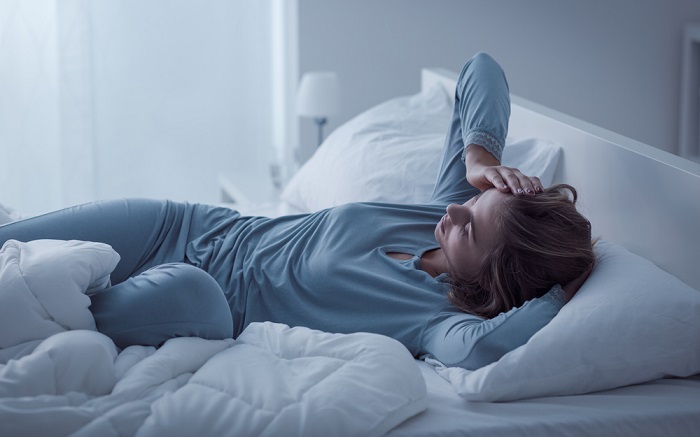Does Your Mattress Give You Sleepless Nights?
2021-08-25

Your mattress is probably the dirtiest part of your home. That’s not a pleasant thought, as a third of your life is spent resting on it.
If you haven’t changed your mattress in the last 10 years, it doesn’t bear thinking about the build-up of a decade’s worth of sweat, saliva, hair and dead skin on your box springs. Not to mention the allergy-causing dust mites, fungal spores, bacteria and chemicals that you are sleeping with for some 8 hours a day, 365 days of the year.
How does your mattress get that dirty?
Common contaminants will naturally build up in your mattress over time. Knowing what they are and how they occur will help you take measures to reduce the build-up over time.
- Skin cells – You shed millions of skin cells a day. These build up in your mattress and are food for dust mites.
- Allergens – Besides your own skin cells, dust mites feed off the skin cells of pets.
- Fungi & bacteria – You sweat even while asleep, particularly in a warm environment – the ideal environment for fungi and bacteria to grow. Yeast, mould, and bacteria including E. coli and Staphylococcus aureus are just some of the bedfellows inhabiting your mattress. You make this worse when you eat in bed. Crumbs and spills can seep into your mattress, giving fungi and bacteria incentive to breed. Fungi can worsen asthma or allergy symptoms.
- Cosmetics – Creams, lotions, makeup and hair products left on your skin or hair before bed can seep into your mattress, adding to the contamination.
- Chemicals – The chemicals used to treat your mattress and bed linen such as flame retardants and plasticizers add to contaminants. You may be breathing in toxic fumes as you sleep.
While it’s not possible to avoid contaminating your mattress, you can take measures to reduce the build-up of these unwanted companions, especially if you are prone to allergies or asthma.
What are allergens?
An allergen is anything that triggers an allergic reaction. They can enter the nose and cause irritation, inflammation and infection that lead to symptoms such as difficulty in breathing, nasal blockage and skin rashes. If you experience allergies in the home, especially in the bedroom, your mattress might be to blame. If you suffer the following symptoms, you may have a dust mite allergy:
- Insomnia or difficulty sleeping
- Nasal congestion
- Sinus infections or headaches
- General chronic sinus problems
- Asthma-like symptoms
- Eczema
While dust mites don’t bite, they feed on the skin cells you shed on your mattress as you sleep. Unfortunately, dust mite droppings are a powerful allergen that could trigger the above symptoms.
How can you reduce allergens in the bedroom?
You can’t avoid soiling your mattress or prevent the millions of dust mites from inhabiting your mattress, but there are steps you can take to minimize allergies as a result.
Change your bedsheets weekly. Wash your sheets at least once a week, preferably in hot water and dry them in a dryer on a high heat setting.
Vacuum weekly. Use a vacuum with a high-efficiency particulate air (HEPA) filter and give your bedroom extra attention when cleaning. However, don’t do this in the evening as it could trigger an allergy attack as it takes around 2 hours for dust to settle.
Remove unnecessary fabrics. Dust mites hang out in fabrics so opt for blinds rather than curtains and avoid using carpets or rugs on your floors, which can trap allergens. Avoid storing extra pillows, plush toys and decorating your room with knick-knacks that collect dust.
Keep pets out of the bedroom. The dander in their fur can set off an allergy attack and they can also bring in mold, bacteria and pollen from outdoors. Be sure to bathe and brush your pets regularly and keep up to date with their medications and shots.
Use a dehumidifier. Dust mites love humid conditions so keep your bedroom at humidity levels between 40 – 50% with a dehumidifier. Clean the filter often so you don’t spread bacteria or fungal spores around the room.
Filter your air-conditioner. Use high-efficiency air filters on your air-con and change the filter every 3 months.
Deep-clean your mattress. Twice a year, give your mattress a thorough cleaning. First sprinkle the mattress with baking soda to absorb odors. After 24 hours, vacuum it all over including crevices. You can try rubbing stains with mild dish soap but don’t add too much water as extra moisture will encourage mold. Thoroughly dry the mattress in sunlight, which will also help disinfect it.
Use a mattress protector. Cover your clean mattress with a waterproof and washable mattress protector, which will protect it from skin cells, dust mites and stains.
Replace your mattress every 8 – 10 years. Even expensive, good-quality mattresses have a shelf life. You’ll know it’s time for a new one if it sags in any place, if springs can be felt or if you simply wake up with aches and pains. A mattress doubles in weight every 10 years due to dust and dust mites.
As disturbing as it might seem, your mattress will continue to harbor unwanted visitors. But by taking measures to keep your bedroom clean, dust-free and dry, you can reduce the allergens that may trigger an attack and, as a result, sleep easier at night.
For more information or to make an appointment, please contact 400-819-6622.
Article reviewed by Dr. Michaela Baum, ENT specialist at ParkwayHealth

Copyright: Health Plus an online health and wellness web resource developed by Parkway Singapore https://www.mountelizabeth.com.sg/healthplus/article/mattress-allergies
References:
- How to Allergy-Proof Your Bedroom. In Webmd. Retrieved 3/5/21 https://www.webmd.com/allergies/sinuses-sleep-bedroom
- Sinus Health and Allergies: Dust Mites. In nycfacemd. Retrieved 3/5/21 from https://www.nycfacemd.com/dust-mites/
- What’s Lurking in Your Mattress? In Webmd. Retrieved 3/5/21 from https://www.webmd.com/a-to-z-guides/ss/slideshow-dirty-mattress-hazards





























